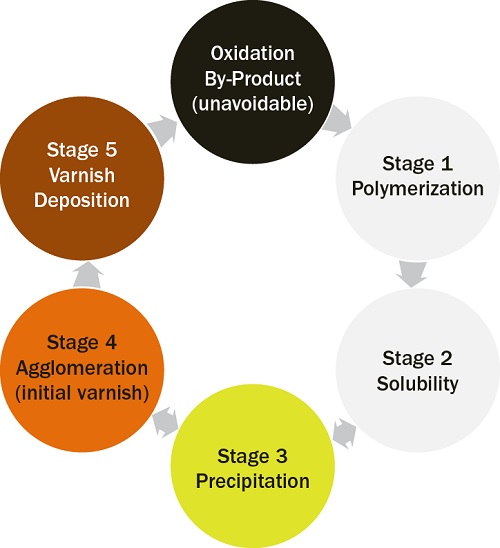
Find your Country and language
Lubricants Beyond Today's Standards TM
Petro-Canada™ Lubricants' distribution network extends to over 80 countries worldwide
Excluding the regions of Crimea, Donetsk and Luhansk

Petro-Canada™ Lubricants' distribution network extends to over 80 countries worldwide
Operators can use several methods to improve the efficiency of their operations; however, one simple but often overlooked solution is to tackle the issue of varnish formation and deposits caused by the turbine lubricant. This article explores:
As the global demand for energy continuously increases, so do the demands for more power stations and continued emphasis on energy efficiency.
Original Equipment Manufacturers (OEMs) are stepping up to the challenge by advancing machinery to push the limits of current efficiency standards, but these changes present different challenges for the machine components and lubricants to perform.
So, what does this mean for operations today?
A best-in-class measurement of combined-cycle efficiency has always been 60% (amount of fuel power that is converted to electrical energy) with some OEMs even pushing for 63%.
GE (formerly Alstom) and Siemens are some of the leaders in developing turbines at or near this level. Equipment builders like these have managed to achieve these remarkable feats through a number of means, and certainly the Combined-Cycle Gas Turbine (CCGT) was a step in the right direction.
These results were made possible as a result of developments in:
While OEMs may debate the advantages and disadvantages of things like air versus steam cooling and different sealing materials, they also realize efficiency is not everything.
With more renewable energy sources on the market, turbines are increasingly used for “load shaving”, which means more starts and stops. Many competing priorities such as flexibility, rapid start-up, low emissions and problem-free turbine lubricants have become just as important as achieving another tenth of a percent in efficiency.
In reality, it is estimated that the majority of new combined-cycle power plants being installed will not routinely be over 60% net efficiency until after 2020.[1]
In the meantime, operations will need to continue to look within their ongoing maintenance practices to realize the benefits of better energy efficiency.
Operators can use several methods to improve the efficiency of their operations; however, one simple but often overlooked solution is to tackle the issue of varnish formation and deposits sometimes initiated by the turbine lubricant.
A great first step, especially with turbine units that stop and start many times a year, is to make sure the turbine oil does not contribute to varnish formation, which is common for turbines going through repeated heating and cooling cycles.
Varnish formation is a continuous cycle and occurs when the solubility limit of the turbine oil is exceeded.
This figure shows a typical cycle of varnish formation caused by the degradation of the turbine oil.
Specifically, insoluble varnish deposits tend to occur when the temperature of the fluid is cooler as their solubility in the turbine oil decreases with temperature.
Varnish in the lubricant, just like most solids in solution (e.g., sugar in water) has greater solubility in warm solutions than cold solutions. Therefore, every shut-down represents an opportunity for more harmful varnish deposits to occur as the oil temperatures decrease. This is especially concerning when it occurs in system components with tight internal clearances, such as in servo valves. It can lead to valve sticking, erosion, malfunction and possibly costly replacement.
A number of options exist to manage varnish in the turbine oil, including:
For more challenging conditions, problem-solving products like TURBOFLO LV (Low Varnish) are formulated to virtually eliminate the problem and restore efficiency and reliability to the turbine. Fluids like this produce very few insolubles, low MPC (Membrane Patch Colorimetry) ratings and low Ultra Centrifuge ratings, which are considered acceptable indicators of potential varnish formation.
By using TURBOFLO LV, operators can be more proactive about managing varnish build-up and therefore reduce downtime and improve efficiency.
Petro-Canada Lubricants products, like TURBOFLO LV, meet or exceed the requirements of the major OEM specifications such as:

